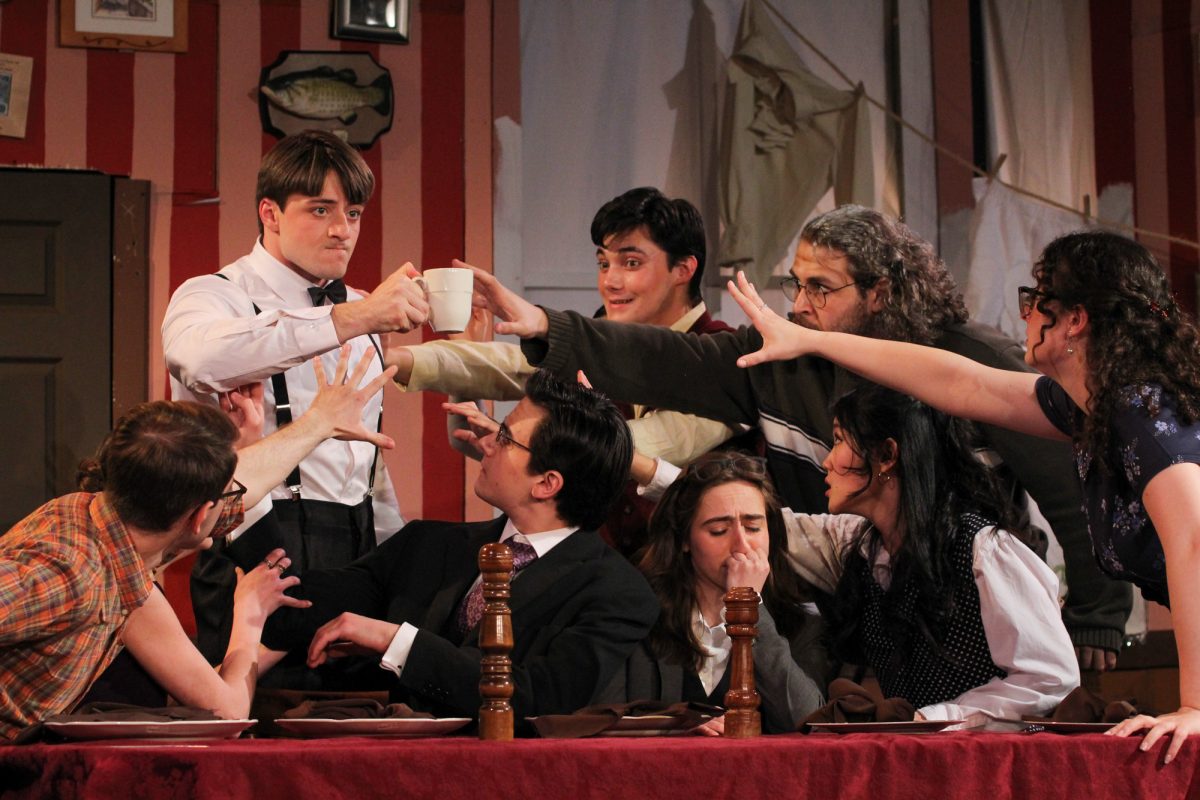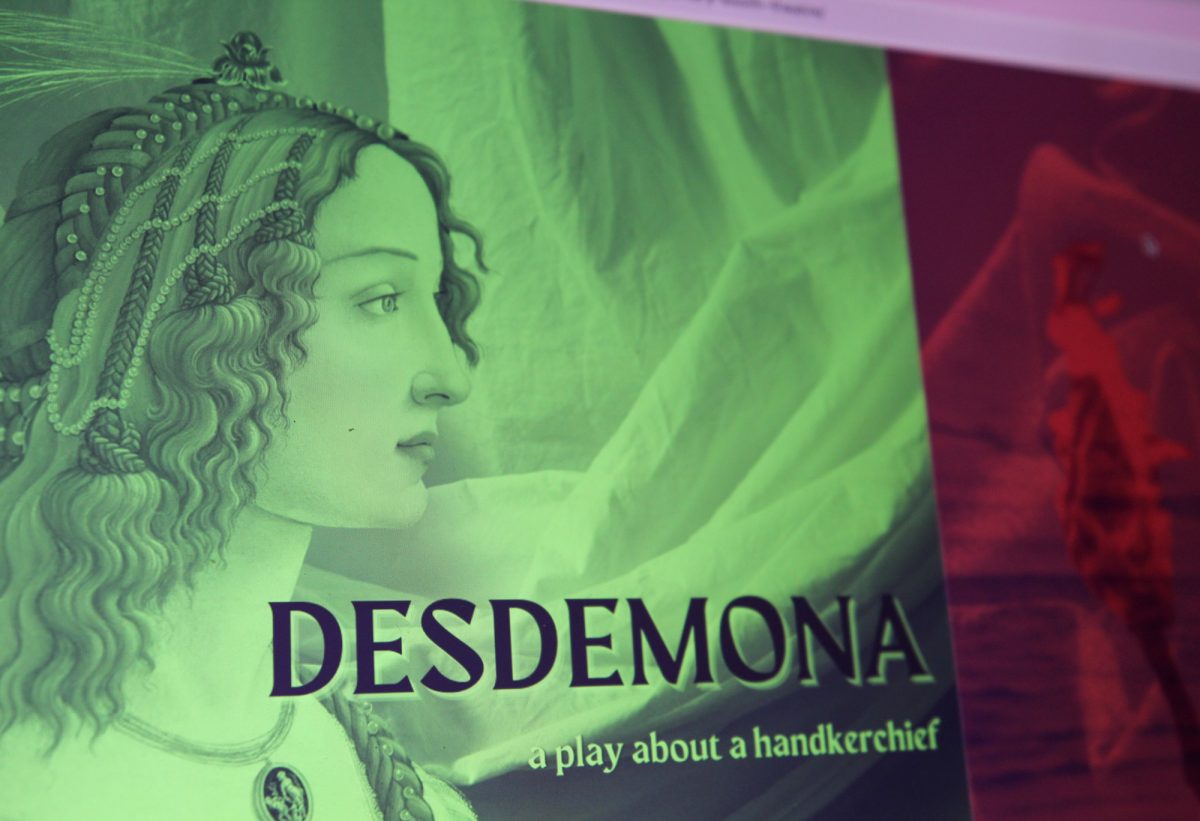“Hell is other people,” according to French playwright Jean-Paul Sartre. Hell is not, however, watching Boston University Stage Troupe’s production of Sartre’s 1944 existentialist play, “No Exit.”
Picture this: After death, you’re led into a sparsely decorated living room, with a sarcastic and mysterious valet as your only guide. Expecting fire and brimstone, you instead encounter the punishment of simple mundanity.

And so, the characters of “No Exit” find themselves in a locked room. Outside of the room, there is nothing, only more rooms, more hallways and more staircases. Without a light switch or mirrors, unable to sleep or blink, they have only each other for company — and torture.
Left to their own devices for eternity, the damned souls are doomed to watch as life on Earth continues on without them at a rapid pace.
Stage Troupe, BU’s oldest student-run performing arts group, performed “No Exit” at BU’s Student Theater at Agganis Arena from Thursday, March 28 through Saturday, March 30. This is a review of the dress rehearsal on Wednesday, March 27.
The production’s three principal actors each successfully held their own in uniquely demanding roles. Between emotional monologues, moments of quiet desperation and even stage combat, nothing is off the table as the characters mentally unravel.

Vincent Cradeau, portrayed by Arthur Adelmann Brants, a sophomore in the College of Arts and Sciences, is the first to arrive in hell. Cradeau — who acts as the audience stand-in in the play’s first minutes — is intent on presenting himself as a noble pacifist and heroic journalist. Later revealed to be a remorseless coward, Adelmann Brants naturally and passionately performs both versions of Cradeau.
Alice El-Ouazzane, a sophomore in CAS, delivers the play’s standout performance as Inez Serrano, the next to arrive. Small but mighty, El-Ouzzane commands the stage with her delivery of Inez’s wry humor, brutal honesty and take-no-prisoners approach. Of the three characters, Inez is the only one who sees past the exteriors of her fellow damned souls and into the reality of their motivations.
Mimi Brown, a junior in the College of Communication, plays Estelle Rigault, the final character to enter hell. Brown imbues Estelle, a privileged Parisian woman, with a desperation for validation and nervous denial of past wrongdoings.
It would be a mistake to not also applaud the performance of Lydia Hall, a freshman in the College of Engineering, as the peculiar valet. Hall’s role, although small, is memorable and darkly funny, especially as she dryly explains the rules of hell to a shell-shocked Cradeau.

Sartre’s humorously underwhelming vision of hell is both absurd and painfully realistic. The characters begin by quarreling over trivial disputes — Inez can’t stand Cradeau’s nervous leg shaking, and Estelle prefers to sit on the yellow divan that complements her blue dress.
Quickly, the conflict evolves beyond minutiae and into a probing psychological drama. The damned souls slowly reveal their backstories to each other and confess the reason they have been sent to hell.
“No Exit” is structured like a game — one of constantly shifting allegiances, with all three characters taking on the roles of both predator and prey. As the tension among Cradeau, Inez and Estelle continues to escalate and reach its breaking point, it’s complicated by their unrequited attractions to each other.
The Student Theater’s limited seating capacity lends an intimacy to the play’s stripped-down claustrophobia, helping to build a sense of growing unease and dread.
Yet, the dialogue never loses its comedic elements. “No Exit” offers plenty of opportunities for the audience to laugh at the sheer ridiculousness of what is happening on stage.
While the momentum of “No Exit” may dip slightly in the middle, its strong climax compensates for the lag, as does the grim ending that hits like a punch in the gut.
As the stage lights dim, Cradeau, Inez and Estelle return to their divans and laugh maniacally, having accepted their fate of remaining forever in the hell that they’ve created together.
The audience member can breathe a sigh of relief, knowing that they — at least — have an exit.























































































































